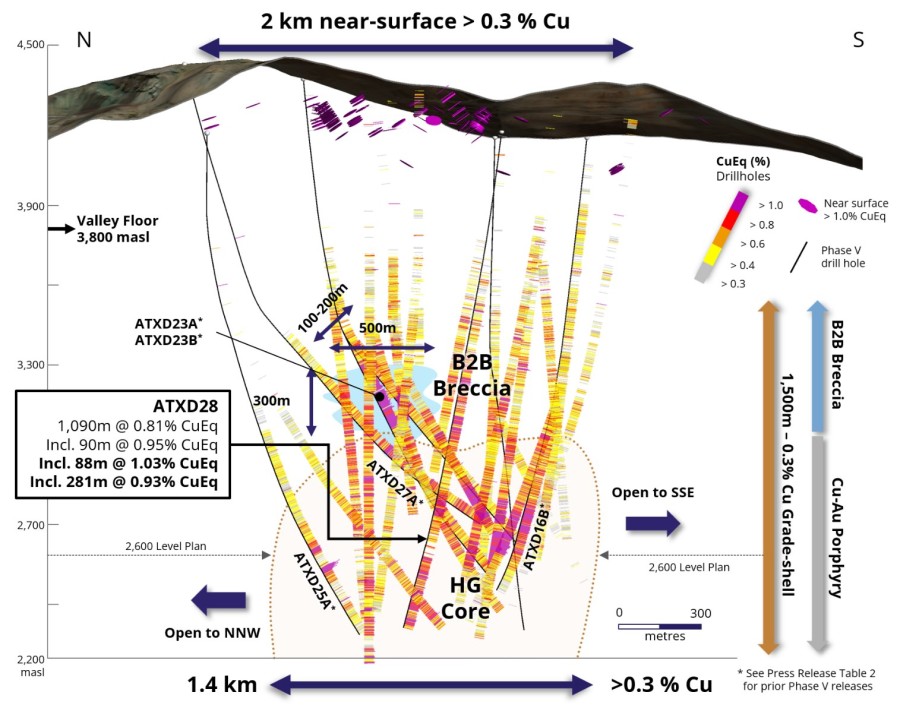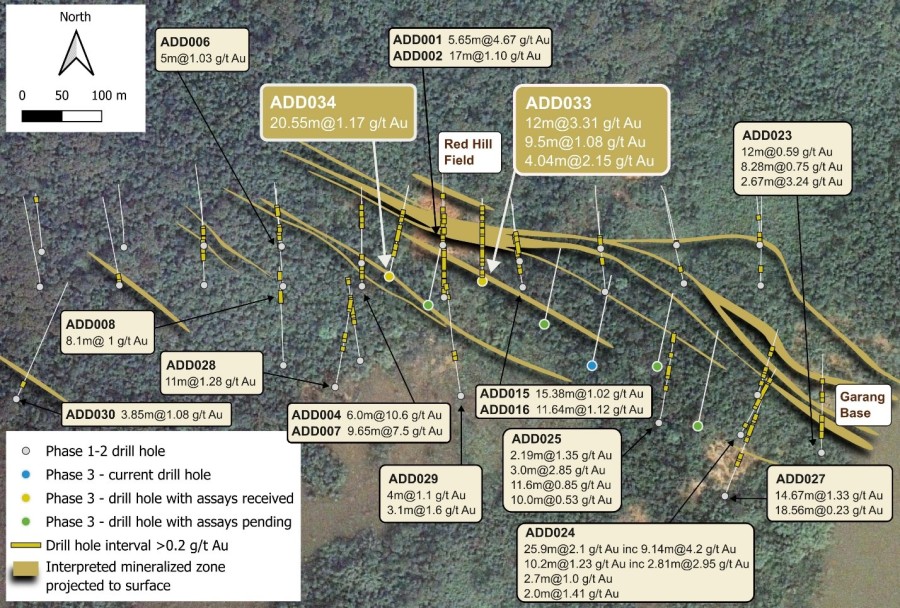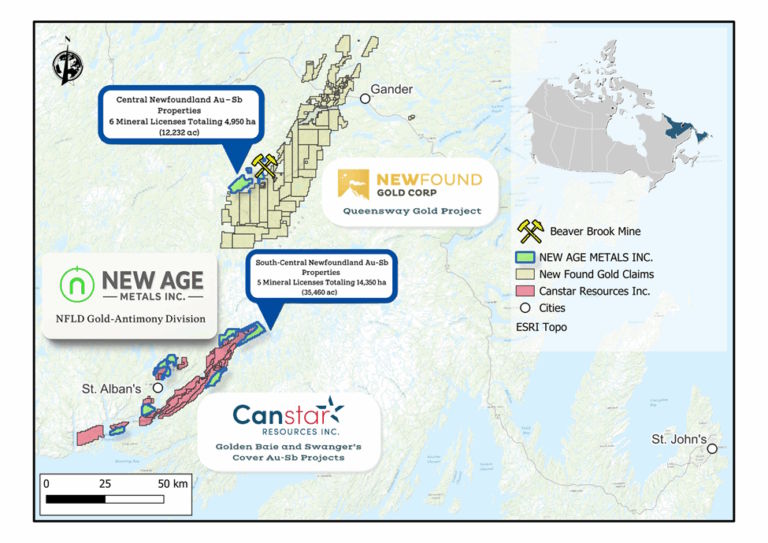TORONTO, Dec. 11, 2019 (GLOBE NEWSWIRE) -- Xanadu Mines Ltd (ASX: XAM, TSX: XAM) (“Xanadu” or “the Company”) is pleased to announce significant improvements in copper and gold recoveries from metallurgical testing from its flagship at Kharmagtai project, which is located in the south Gobi region of Mongolia (Figures 1). The new metallurgical test programme has expanded on that conducted during the 2018 Mineral Resource Estimate (see Xanadu’s ASX/TSX announcement dated 31 October 2018) and 2019 Scoping Study (see Xanadu’s ASX/TSX announcement dated 11 April 2019) and has produced substantial improvements in copper and gold recovery and in copper concentrate copper and gold grades.
HIGHLIGHTS
- Metallurgical test work yields high grade copper and gold concentrate at Kharmagtai
- Improved metallurgical recoveries indicate a major value uplift for Kharmagtai
- An estimated 4.5% increase in copper recovery to achieve an average recovery of 89.5% for the two main metallurgical composites
- An estimated 3% increase in gold recovery to achieve an average recovery of 69.7% for the two main metallurgical composites
- Concentrate grades averaged 25.2% Cu and 25.8g/t Au for the two locked cycle tests
- Further optimisation work may lead to further improvements
Xanadu’s Managing Director & Chief Executive Officer, Dr Andrew Stewart, said “We are extremely pleased with these new metallurgical results from Kharmagtai, which are in line with or better than expected at this stage in the projects life and we are comfortable that additional improvements can be made further down the track. These early stage flotation test results are very encouraging and indicate that a standard crushing, grinding and flotation process will be enough to deliver good extraction of the economic minerals from the deposit. In combination with the low content of deleterious elements, we foresee no significant hurdles to producing a high-quality concentrate via standard processing pathways that will be in high demand from all the major global copper smelters, at a time the time of production.”
UPDATED METALLURGICAL TESTS FOR KHARMAGTAI
Additional metallurgical testing has been completed on the Kharmagtai Project. This work was conducted at SGS Canada in Vancouver, BC (“SGS”) under the direction of David Middleditch and Andy Holloway of AGP Mining Consultants Inc. (“AGP”). New composites, three domain and nine variability were selected by Xanadu geologists with input from AGP personnel to represent the main geological and alteration domains within the open pit portion of the three existing deposits and to be representative of material in the 2018 Mineral Resource Estimate.
Copper and gold recoveries average 89.5% and 69.7% respectively for the two main master composites, ranging from 89.3% to 89.7% for copper and 60.8% to 78.7% for gold. Copper concentrates graded at an average of 25.2% Cu and 26.5g/t Au and ranged from 24.8 to 25.6% Cu and 21.5 to 30.0g/t Au.
2019 METALLURGICAL TESTWORK DESIGN AND RESULTS
The 2019 metallurgical test program was designed to improve upon metallurgical assumptions in the 2018 Mineral Resource Estimate (see Xanadu’s ASX/TSX announcement dated 31 October 2018) and 2019 Scoping Study (see Xanadu’s ASX/TSX announcement dated 11 April 2019). Three domain composites and nine variability composites were selected to represent the main geometallurgical domains within the open pits designed during the 2018 Mineral Resource Estimate.
Each composite was run using the same base parameters as the 2008 metallurgical tests as a starting point. Selected composites were then optimised for the effect of primary grind and changes to cleaner parameters, flotation times and additive dosages. Locked cycle test characteristics for the two major alteration domains (Albite and Chlorite-Sericite) which represent around 80% of the mill feed from the 2018 MRE and 2019 Scoping Study can be found in Table 1.
Table 1: Locked cycle test results for the two main master composites at Kharmagtai
| Test | Products | Wt. % | Assays, g/t, % | Distribution, % | ||||||
| Cu | Fe | Au | S | Cu | Fe | Au | S | |||
| Alb MC-LCT1 | 3rd Cleaner Con | 1.0 | 25.57 | 31.60 | 30.04 | 35.80 | 89.7 | 5.4 | 78.7 | 41.2 |
| 1st Cleaner Tailing | 20.2 | 0.03 | 7.36 | 0.13 | 2.25 | 2.1 | 24.9 | 7.0 | 51.9 | |
| Rougher Tailing | 78.8 | 0.03 | 5.28 | 0.07 | 0.08 | 8.2 | 69.7 | 14.3 | 6.9 | |
| Feed | 0.29 | 5.97 | 0.39 | 0.88 | ||||||
| Ser_Chl MC-LCT1 | 3rd Cleaner Con | 1.2 | 24.77 | 21.50 | 21.49 | 34.96 | 89.3 | 5.0 | 60.8 | 14.1 |
| 1st Cleaner Tailing | 21.8 | 0.06 | 14.47 | 0.55 | 11.51 | 3.9 | 41.6 | 27.9 | 83.4 | |
| Rougher Tailing | 77.0 | 0.03 | 5.25 | 0.06 | 0.10 | 6.9 | 53.4 | 11.4 | 2.5 | |
| Feed | 0.34 | 7.58 | 0.43 | 3.00 | ||||||
| Average | 3rd Cleaner Con | 1.1 | 25.2 | 26.5 | 25.8 | 35.4 | 89.5 | 5.2 | 69.7 | 27.7 |
2019 samples were selected from all three deposits with variability domains within each deposit defined by a geometallurgical model developed to represent the key rock type and alteration types (Table 2 and 3).
Flotation test work on these composites consisted of a series of batch rougher and cleaner tests with locked cycle tests conducted on the two main Master Composites, Ser_Chl and Alb. The locked cycle cleaner test flowsheet is given in Figure 2 and performance curves for copper and gold are displayed in Figure 3 and Figure 4.
The key differences between the 2008 test work and the 2019 test work relate to head grade and sample selection. The 2008 tests were conducted on samples with copper and gold grades not representative of the bulk of the open pit mineralisation. Samples selected for the 2008 test work were not selected based on metallurgical or geological domains. In contrast, samples within the 2019 test program were selected based on a geometallurgical model developed by CSA Global, which represents different rock and alteration types throughout the three deposits. These rock and alteration types will represent the largest variability in metallurgical responses and selecting composites based on these give a much more robust dataset for metallurgical performance.
Table 2: 2019 metallurgical sample descriptions
| Comp # | Deposit | GeoMet | Weight Kg | Description | Type | Notes |
| 1 | White Hill | Potassic_dio | 36.8 | minor contribution (<10%) in early years of mining | VARI | Potassic – Diorite: (or other intrusions) at depth below the starter pit at White Hill |
| 2 | Potassic_slt | 38.35 | minor contribution (<10%) in early years of mining | VARI | Potassic – Siltstone: at depth below the starter pit at White Hill | |
| 3 | Ser_chl | 49.45 | represents 40% of sulphide tonnage in early years of mining | VARI | Sericite-Chlorite +/- carbonate, calcite, minor albite. This material should be noticably softer (lower BWI) than all other material types, but may prove to have some more problematic mineralogy from a flotation perspective (more chlorite, sericite and possibly some minor hydrothermal clays) | |
| 4 | Alb | 53.15 | represents 40% of sulphide tonnage in early years of mining | VARI | Albite dominant Sodic altered material, which is likely to be hard (high BWI) but not terribly abrasive, and should not cause too many problems in the float circuit apart from a weak chlorite/sericite overprint | |
| 5 | Copper Hill | Ser_chl | 34.35 | represents 45% of sulphide tonnage in early years | VARI | Sericite-Chlorite +/- carbonate, calcite, minor albite. This material should be noticably softer (lower BWI) than all other material types, but may prove to have some more problematic mineralogy from a flotation perspective (more chlorite, sericite and possibly some minor hydrothermal clays) |
| 6 | Alb | 38.3 | represents 45% of sulphide tonnage in early years | VARI | Albite dominant Sodic altered material, which is likely to be hard (high BWI) but not terribly abrasive, and should not cause too many problems in the float circuit apart from a weak chlorite/sericite overprint | |
| 7 | Ser_chl | 51.3 | represents 40% of sulphide tonnage in early years | VARI | Sericite-Chlorite +/- carbonate, calcite, minor albite. This material should be noticably softer (lower BWI) than all other material types, but may prove to have some more problematic mineralogy from a flotation perspective (more chlorite, sericite and possibly some minor hydrothermal clays) | |
| 8 | Alb | 39.95 | represents 40% of sulphide tonnage in early years | VARI | Albite dominant Sodic altered material, which is likely to be hard (high BWI) but not terribly abrasive, and should not cause too many problems in the float circuit apart from a weak chlorite/sericite overprint | |
| 9 | TBX | 49.3 | <10% of sulphide tonnage in early years | MASTER | Tourmaline Breccia - this will be tested as a Master composite, so needs Bwi | |
| 10 | Master Comp | Alb | 51 | 17-kg from #4, 17-kg from #6, 17-kg from #8 | MASTER | Blend of albite units from the 3 deposits |
| 11 | Ser_chl | 51 | 17-kg from #3, 17-kg from #5, 17-kg from #7 | MASTER | Blend of Sericite/Chlorite units from the 3 deposits |
Table 3: 2019 metallurgical composite head grade analysis
| Comp | Cu (%) | Fe (%) | S (%) | Au (g/t) |
| Comp 1 | 0.31 | 6.1 | 3.02 | 0.16 |
| Comp 2 | 0.31 | 3.7 | 1.42 | 0.12 |
| Comp 3 | 0.32 | 7.04 | 2.41 | 0.33 |
| Comp 4 | 0.24 | 5.22 | 0.93 | 0.18 |
| Comp 5 | 0.45 | 7.06 | 2.85 | 0.40 |
| Comp 6 | 0.36 | 6.35 | 0.86 | 0.60 |
| Comp 7 | 0.28 | 8.07 | 3.86 | 0.57 |
| Comp 8 | 0.28 | 5.98 | 0.97 | 0.50 |
| Comp 9 (TBX Master) | 0.27 | 7.37 | 2.27 | 0.50 |
| ALB Master Comp | 0.29 | 5.89 | 0.93 | 0.42 |
| SER CHL Master Comp | 0.35 | 7.44 | 3.03 | 0.42 |
| Average | 0.31 | 6.47 | 2.07 | 0.39 |
| Max. | 0.45 | 8.07 | 3.86 | 0.60 |
| Min. | 0.24 | 3.70 | 0.86 | 0.12 |
PREVIOUS METALLURGICAL WORK AT KHARMAGTAI
In 2008, Ivanhoe Mines Ltd completed a series of sulphide floatation metallurgical test on Kharmagtai. For additional information on these tests please see ASX announcement dated 11th April 2019 and the NI43-101 technical report filed on SEDAR in October 2018.
These were opportunistic and tied in with metallurgical testing for the Oyu Tolgoi deposit. Samples selected from Kharmagtai were from five drill holes within the three main deposits. Sample selection focused on the higher-grade material rather than a representative sample based on geological or geometallurgical domains.
In summary, a program of preliminary metallurgical testwork was completed by G&T Metallurgical Services (Kamloops, Canada) on a batch of nine composite samples from Mongolia. The samples were reported at that time to have originated from an untested region of the Oyu Tolgoi deposit; however, Xanadu can confirm that five of the nine composite samples did in fact originate from the region now described as Kharmagtai.
Flotation testwork on these samples consisted of a series of batch rougher and cleaner tests. No locked cycle testing was completed.
In this work, Aerophine 3418A was used as a selective copper sulphide collector and MIBC (Methyl Iso Butyl Carbinol) was used as a flotation frother. Pulp pH was adjusted in the cleaner circuit using lime to increase pH to a point where only moderate pyrite flotation would be expected. Insufficient work was conducted in this preliminary program to fully optimise flotation conditions.
Saleable copper concentrates were achieved for all composites with average contents of approximately 30% copper. At these concentrate levels, the recovery of copper ranged between 75% and 90%, although AT 003 achieved only 30% recovery due to the elevated levels of oxide copper mineralisation measured in this composite.
COMPETENT-QUALIFIED PERSON STATEMENT
The information in this announcement that relates to metallurgical test work is based on a summary of results compiled by Andrew Holloway who is responsible for metallurgical and process engineering aspects of the project. Mr. Holloway, who is a principal of AGP Mining Consultants Inc. (Toronto, Canada) and is a Professional Engineer in Ontario, Canada, has sufficient experience relevant to the style of mineralisation and type of deposit under consideration and to the activity he is undertaking to qualify as the “Competent Person” as defined in the 2012 Edition of the “Australasian Code for Reporting Exploration Results, Mineral Resources and Ore Reserves” and the National Instrument 43-101. Mr Holloway consents to the inclusion in the report of the matters based on this information in the form and context in which it appears.
The information in this announcement that relates to exploration results is based on information compiled by Dr Andrew Stewart who is responsible for the exploration data, comments on exploration target sizes, QA/QC and geological interpretation and information. Dr Stewart, who is an employee of Xanadu and is a Member of the Australian Institute of Geoscientists, has sufficient experience relevant to the style of mineralisation and type of deposit under consideration and to the activity he is undertaking to qualify as the “Competent Person” as defined in the 2012 Edition of the “Australian Code for Reporting Exploration Results, Mineral Resources and Ore Reserves” and the National Instrument 43-101. Dr Stewart consents to the inclusion in the report of the matters based on this information in the form and context in which it appears.
For further information, please contact:
Andrew Stewart
Chief Executive Officer
T: +61 2 8280 7497
M: +61 0409819922
This email address is being protected from spambots. You need JavaScript enabled to view it.
www.xanadumines.com






